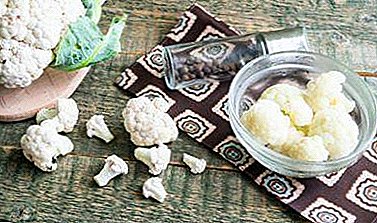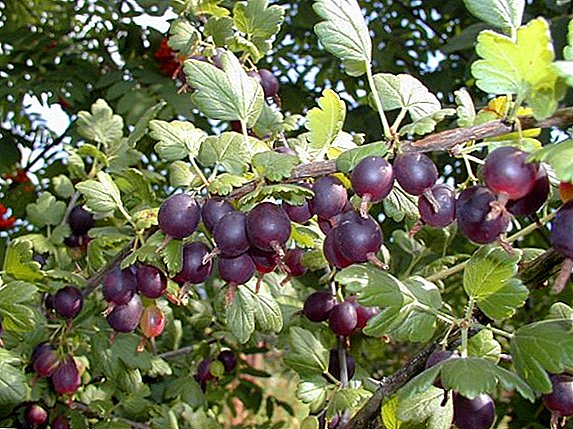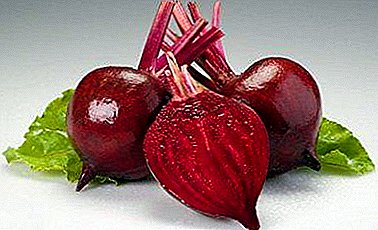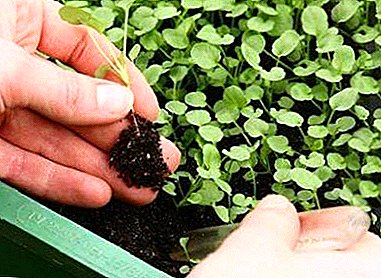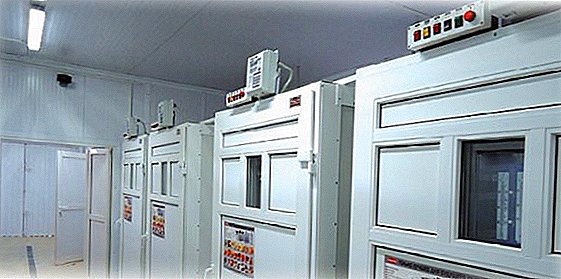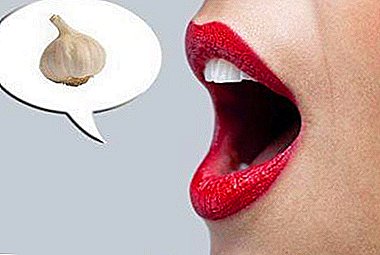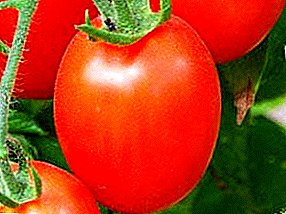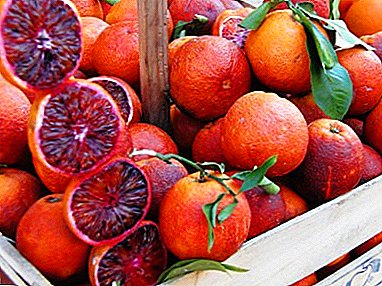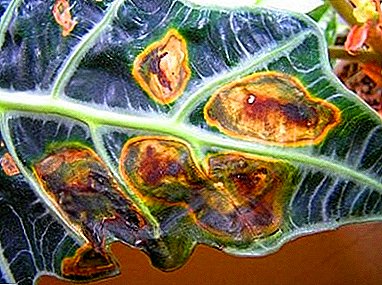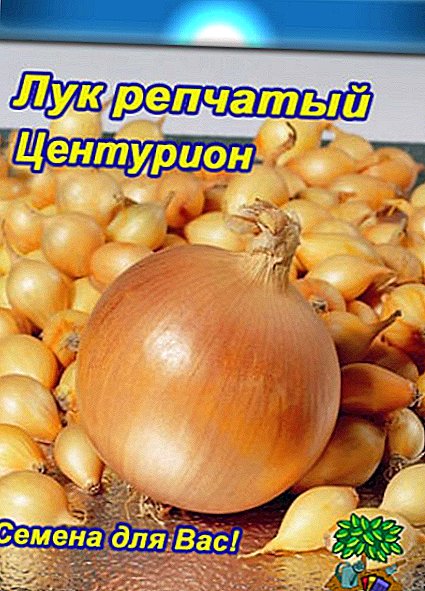 The early ripe Dutch onion "Centurion" today enjoys the glory of a better hybrid, which in terms of productivity and endurance will not find a worthy competitor. It is undemanding in care, resistant to a number of diseases, and even stored for a long time. What is this popular variety, how and where it can be grown - we will tell later in the article, as well as reveal the secrets of increasing the yield of vegetable culture.
The early ripe Dutch onion "Centurion" today enjoys the glory of a better hybrid, which in terms of productivity and endurance will not find a worthy competitor. It is undemanding in care, resistant to a number of diseases, and even stored for a long time. What is this popular variety, how and where it can be grown - we will tell later in the article, as well as reveal the secrets of increasing the yield of vegetable culture.
Variety description
High yields, early ripening, unpretentiousness and endurance - these are the main features that characterize the "Centurion". The creators of this Dutch hybrid initially determined its purpose for growing turnips.
Therefore, you should not try at home to multiply the vegetable seed method. You can grow it only from purchased seeds or with the help of sevka. But in the latter version it will take at least 2 years to get full fruits. If you grow hybrid varieties of onions from seeds, the resulting crop will differ in small sizes of turnips.
Did you know? The world leader in onion consumption per capita is Libya, where, according to the UN, the average citizen eats more than 33 kg of onions per year.

The bulbs are characterized by a taste of medium sharpness, which is why they are practically not used raw. But in terms of taste, it is an indispensable ingredient for canning vegetables and salads. The fruit has a golden shiny husk and a white heart with a slight greenish tint.
Get acquainted with the nuances of growing onion varieties such as "Exhibicin" and "Sturon".
Externally, the hybrid turnip is not distinguished by its large size and weight. Their privilege remains the density, regular, slightly elongated shape, high performance and good keeping quality. According to gardeners, onions are easy to peel, it does not cause heavy tearing.
Small hybrid heads allow you to fully use the purified product, leaving no residue. The variety differs from its counterparts in high germination rates, as well as resistance to the formation of arrows. 
Characteristics of onions and yield
"Centurion" is easily recognizable by its small bottom and narrow neck. These parts are very beneficial for growers, because they minimize waste when cleaning the bulbs and prevent the ingress of bacteria into the inside of the fruit.
Did you know? The historian Herodotus, who lived in ancient Greece 2500 years ago, noted that there was an inscription on the pyramid of Cheops on how much garlic and onions were consumed by workers. She said: "For radish, onions and garlic, 1600 talents of silver were spent on food for slaves."
Seeds of this Dutch variety are marketed with "F1". This means that the hybrid is grown only from the first generation. The hybrid sowing tree is a small onion with a diameter of up to 2 cm, which later forms elongated turnips with a smooth shape and dense structure.  Each of them, on average, reaches a maximum weight in the range of 90-100 g. Centurion is insensitive to climatic changes and temperature extremes. However, experts recommend growing onion from seedlings in a two-year culture.
Each of them, on average, reaches a maximum weight in the range of 90-100 g. Centurion is insensitive to climatic changes and temperature extremes. However, experts recommend growing onion from seedlings in a two-year culture.
Onion ripening occurs 3 months after foliage emerges on the plantation. The variety is great for cultivation in personal needs and on an industrial scale. From 1 square. m of the garden can collect up to 4 kg of crop, and up to 400 kg per hectare of field.
All turnips without prejudice to taste and presentation in a cool and well-ventilated place can lie until mid-spring.
Did you know? In the Babylonian collection of Yale University there are three small clay tablets, which are the first known to us cookbooks. They describe the "culinary tradition, striking in its wealth, elegance and skill", with many flavors and tastes that are familiar to us today. It turned out that in ancient Mesopotamia, they simply adored the whole onion family. Mesopotamians widely used not only ordinary onions, but also leeks, garlic and shallots.

Selection of planting material
To get a good harvest "Centurion" with excellent taste and product characteristics, the first thing you need to choose high-quality sevok or nipper. Active sale of seed begins in mid-February. Therefore, it is useful to learn the basic rules of a competent choice.
Sevok
The period from mid-winter to the very beginning of planting is recommended by experts for the purchase of seed. If you are not going to take care of the proper storage of the purchase, then it is best to make it in April when you plan to land.
True, in this case one should be prepared for the fact that the assortment will turn out to be poor and one may not find the desired variety. But the best thing to think about is the preparation of the set in February or March. After all, the later it is bought, the worse it looks.  All planting material in this category of onions should be sorted by size. Experienced gardeners for growing turnips are recommended to choose onions with a diameter of 1.4-2.4 cm. They can be planted in a podzim way or in the spring without fear of marksmanship.
All planting material in this category of onions should be sorted by size. Experienced gardeners for growing turnips are recommended to choose onions with a diameter of 1.4-2.4 cm. They can be planted in a podzim way or in the spring without fear of marksmanship.
We advise you to familiarize yourself with the cultivation of onion cultivation.
Larger specimens with a diameter of up to 3 cm are cheaper and have a lower yield. Most often they are used for winter planting on greens. But sevok, whose diameter reaches 4 cm, is suitable only for the pen.
Important! If in the spring to plant the smallest set with a diameter of 0.8-1.3 cm, he will not have time to build up a good onion mass at the right time. As a result, you get a fine harvest. This is a suitable option for podzimyh landings.
Regardless of the origin of the set, periodically it must be checked for quality. Onions should be firm, dry, with a uniform color husk. On high-quality material signs of mold, rot, any damage, dents, spotting and dampness are not allowed.  An exception to this rule can only be a damp hybrid that should be dried in a spacious cardboard box. When choosing a bow, special attention should be paid to its shape. Ideally, it should be the same, without any deformation.
An exception to this rule can only be a damp hybrid that should be dried in a spacious cardboard box. When choosing a bow, special attention should be paid to its shape. Ideally, it should be the same, without any deformation.
Do not be tempted by generous discounts. From such a product will not be: either collect a meager crop, or sprout only part of the planted plantation. Typically, these gestures are dishonest sellers make when selling frosting planting material.
It feels hard to the touch, and once it is warm, it immediately thaws and turns into a strongly smelling soft "boiled" substance. If water flows from it, this sevok is not suitable for planting at all and must be disposed of. But if only the top of the bulbs looks scalded, then only a good feather will grow from them, since the turnips cannot be large.
Video: how to choose and save correctly until spring planting of onion sets
Important! Never buy planting material in questionable outlets. It is best to go for such purchases in specialized centers. When choosing seeds, always pay attention to the presence of branded holograms on the packages..
Seeds
Every experienced gardener knows that onion nib very quickly loses germination, therefore avoids overdue packages and those where the shelf life of seeds expires in the year of planting. In such cases, only about 20% of the sown grain will rise.
Therefore, in order not to be trapped, it is better to buy the material that was collected last fall. This nuance is of particular importance when the cost of a high-quality purchase is not cheap. 
Growing conditions
Like other hybrid varieties, Centurion is responsive to the abundant moisture and nutrients in the soil. For the cultivation of this variety should choose well-lit fertile areas with a neutral or alkaline acidity reaction of the substrate.
In an oxidized environment, a vegetable will not produce the desired yield. The same applies to lowland areas in which cold air settles, as well as melted snow and rainwater stagnates.
Important! The best precursors for onions of any kind are legumes, as well as carrots, cucumbers, parsley and all pumpkin. But after the solanaceous and garlic plant is not worth planting.
Experts consider sloping southeastern places with sandy loam to be an ideal option for a hybrid. The optimum temperature for the growing season is + 12-16 ° C. In the open field it can withstand cooling to +2 ° С. It is important that groundwater is located no closer than 1 m from the ground. 
Soil and fertilizer
Site preparation for onion beds begins in the fall. Therefore, it is important to timely harvest the previous crops and check the acidity of the soil. At home, this procedure can be carried out using a litmus strip or ordinary table vinegar.
If you drop a liquid on the ground removed from the 20-centimeter depth, sizzling bubbles should appear. In the case when such a reaction does not occur, it will be necessary to deoxidize the substrate. To this end, before the autumn digging, you will need to scatter dolomite flour, cement dust, old plaster or fluff lime around the garden.
We advise you to read about what types of soil exist, how to improve soil fertility, how to independently determine the acidity of the soil at the site, as well as how to deoxidize the soil.
The required amount of the substance depends on the pH: the higher the acidity at the site, the higher the dosage. On average, for every 1 square. m territory should fall from 150 to 300  In the process of preparing the garden will need to dig at the spade bayonets. But before that, it is important to fertilize it with missing components. It should be understood that Centurion prefers soft and loose sandy or chernozem well-groomed substrates. Clay or peat sites are strictly not suitable for planting this hybrid.
In the process of preparing the garden will need to dig at the spade bayonets. But before that, it is important to fertilize it with missing components. It should be understood that Centurion prefers soft and loose sandy or chernozem well-groomed substrates. Clay or peat sites are strictly not suitable for planting this hybrid.
Important! Nitrogen-containing substances contribute to the oxidation of beds, so they are recommended to be made only in an alkaline environment. But keep in mind that the bow completely devoid of nitrogen begins to wither.
Experienced gardeners never plant onions near garden plants, as they obscure the bed and also deplete it.
In order to harvest a good harvest, it is recommended to deposit at least 1 tbsp at the selected site from autumn. l .:
- phosphorus;
- potassium;
- nitrophosphate;
- superphosphate;
- ammonium nitrate;
- urea;
- potassium chloride.

When fertilizing a vegetable garden, remember that an excess of organic matter creates an attractive environment for various fungal and bacterial infections. As a result, the culture does not have time to mature and rot in the soil. But the extra mineral components often lead to burns of the root system. In this case, the bulbs lose their taste and quality.
We recommend reading about how to fertilize onions.
Growing from seed to seedlings at home
Planting onions is carried out according to a specific algorithm, depending on the preferred method of cultivation. Note that in regions with harsh climatic conditions, it is recommended to grow Centurion by seedling. How to do it correctly, consider in detail.
Did you know? The Latin scientific name of onion - allium - was given by Carl Linnaeus and comes from the Latin name for garlic, which, in turn, according to one version, is associated with the Celtic word all - "burning"; another version derives the name from the Latin halare - “smell”.

Seed preparation
Given the fact that the onion nib very long sprouting, before planting it should be checked for germination and prepare. For this, agronomists advise to carefully examine the seeds. They must be dry, black and uniform in shape as well as size.
Some manufacturers of Dutch breeding resort to pre-treatment of seeds with protective agents. Such a bow is distinguished by all sorts of bright colors. If the pickling was not carried out, then home disinfection will not interfere. To do this, dip the planting material in a weak solution of potassium permanganate.
For better germination, chernushka is soaked for 24 hours in ordinary water at room temperature. At times, it will improve the germination rate of the growth stimulant solution (“Kornevin”, “Emistim”, “Ecosil”). After the specified time, the grains are removed from the humid environment and dried.
Video: preparing onion seeds for sowing When they become loose, you can begin to sow. Some housewives advise to miss the moment of drying and stimulate the germination of nippy by the greenhouse effect. To do this, they line the wet seeds on a wet sackcloth and from above cover with plastic wrap.
It is important as necessary to spray the workpiece from the spray. After three days, the seeds will give the first roots. After that, they can be planted in a container on the windowsill.
Important! In the case of a wintering plant, a hybrid is best planted in open ground in the second decade of September or in the first weeks of October. It is important to have time to implement this venture at least a few weeks before the first frosts.
Content and location
The best place for the germination of onion seedlings is a room with a stable temperature regime in the range of + 15-20 ° C. It is important to ensure good coverage of emerging shoots, otherwise they will not be able to fully develop.
If daylight is not enough, it makes sense to install additional fluorescent lamps. For the cultivation of "Centurion" seedling method will need to prepare a wooden or plastic container with the required type of substrate.  Take into account the time of planting grains and take care of the availability of land in advance, because in winter you will not get it anywhere. And the best time for planting a hybrid in this case is mid-February.
Take into account the time of planting grains and take care of the availability of land in advance, because in winter you will not get it anywhere. And the best time for planting a hybrid in this case is mid-February.
Seed planting process
Sowing prepared Chernushka traditionally carried out in rows. To this end, in the box you need to loosen the soil well, and then moisten it. Then, 5 cm recede from the edge of the tank and at a distance of 25 cm they make furrows 2-3 cm deep. The seeds are carefully sown, retreating from each other up to 15 cm.
Read more about how to properly grow onions from seeds.
Video: planting onion seeds At the end of sowing, the rows are covered with soil, slightly tamping it down. No need to deepen the seeds. To speed up the seedlings, the construction is covered with a film, thus creating a specific microclimate inside. With the friendly appearance of sprouts shelter is removed.
Did you know? In history there were times when in Europe it was forbidden to eat onions for the holidays. This was due to the properties of the vegetable to cause tears.
Seedling care
An older onion requires regular loosening of the soil between the rows, cleaning from weeds and moisturizing procedures. These factors mainly affect the quality of the future harvest. The rest of the hybrid unpretentious.
Water the seedlings as the soil dries. It must not be overwetted, stagnant or excessively dry. At first, water your “bed” with settled water at room temperature every day, carefully protecting feathers. It is best to plan watering in the morning or evening.  To bulbous seedlings were not fragile and strongly elongated, watch the level of its illumination. The more light, the stronger will be the leaves and turnips. The optimal day length for this variety should be at least 12 hours.
To bulbous seedlings were not fragile and strongly elongated, watch the level of its illumination. The more light, the stronger will be the leaves and turnips. The optimal day length for this variety should be at least 12 hours.
After a month and a half, the onions must be prepared for future transplantation. For this purpose, experienced gardeners recommend hardening the plant. This is done gradually. For the first time, you need to set the capacity for the Centurion for 15 minutes to the street or open balcony at the most warm time.
In the future, the duration of such a "walking" should be increased daily. For the purpose of quenching, never leave seedlings to sleep outside. Until the hybrid is transplanted into the open ground, seedlings are fed twice with mineral complex fertilizers.
Did you know? In the Middle Ages, to protect against arrows, strikes of crossbows and swords, warriors wore iron helmets and chain mail, and also covered themselves with shields. But many, not believing in the power of this armor, were reinsured with a talisman in the form of a cut onion or garlic head. It was believed that these vegetables have unique magical powers.

For the first time, this can be done when 3-4 leaves are formed on the plants, and the second time - in 14 days. In both cases, the nutritional mixture for onions is prepared from 10 g of superphosphate, 2.5 g of potassium chloride and 5 g of urea, which must be dissolved in 5 liters of not cold water.
Transplanting seedlings to ground
Starting from the second half of April, seedlings can be relocated to an open garden bed. It is important to have time before the beginning of May, since as the temperature rises on the street, it will be more difficult for seedlings to take root in the new environment. By this time, no less than 50 days should elapse from the moment of emergence of the nipper shoots.
It is important that the garden warms up well, at least to +12 ° C. And also do not ignore his preliminary training. Experienced owners in addition to the autumn fertilizer and digging the selected place before planting onion seedlings thoroughly clean it from the weeds that have appeared and loosen the ground well.  After that, rake level the surface and make furrows at a distance of 30 cm from each other.The optimum depth of the rows is 4-5 cm. Before planting the soil in the garden, as well as in the tank with seedlings, it is necessary to moisten generously.
After that, rake level the surface and make furrows at a distance of 30 cm from each other.The optimum depth of the rows is 4-5 cm. Before planting the soil in the garden, as well as in the tank with seedlings, it is necessary to moisten generously.
Important! Only well-developed and intact seedlings are subject to replanting. And in order to further develop them properly and not deplete the culture by excessive consumption of moisture, experts advise in the process of transplanting onions by a third to cut its feathers and roots.
The seedlings of the "Centurion" are carefully removed from the planting tank and dipped into a special clay-and-dung mash with their roots. After that, the vegetable is ready for planting. Seedlings are placed in the furrow at a distance of 15 cm from each other, deepening only 1 cm.
At the final stage of planting, the rows are covered with soil and compacted. The next morning, the bed is important to moisten with a solution of humate, which will accelerate the survival rate and the growth of bulbs. When moisture is absorbed, grind the area with peat.  Despite the endurance of the Dutch hybrid, at first it must be protected from direct sunlight. To this end, many gardeners construct special covering structures from metal arcs and plastic film.
Despite the endurance of the Dutch hybrid, at first it must be protected from direct sunlight. To this end, many gardeners construct special covering structures from metal arcs and plastic film.
Cultivation from sevka in open ground
Seeding cultivation is more common in regions with a mild mild climate. This method does not provide for difficulties and, in case of compliance with the elementary agrotechnical rules, guarantees a high yield. Consider everything in stages.
Site selection and soil preparation
For those who seek to get as early as possible harvest, suitable greenhouse cultivation of a hybrid. But due to the genetic predisposition of the variety, there is no need to create an artificial climate, because the culture is considered early maturing and is characterized by increased resistance to temperature changes, as well as diseases and pests.  Consequently, the vegetable will be more comfortable in the open garden. At first, on the garden, of course, covering structures will be needed.
Consequently, the vegetable will be more comfortable in the open garden. At first, on the garden, of course, covering structures will be needed.
When choosing a seat should be considered:
- soil acidity level (neutral and alkaline environment is preferred);
- the location of underground currents (it is impossible to allow proximity, otherwise the culture will be exposed to the constant risk of rotting from an excess of moisture);
- the degree of illumination of the area (you need to choose only bright areas);
- progenitors and neighboring plants;
- soil composition (heavy soils are unacceptable).
Begin to prepare for planting onions in the fall, immediately after harvesting the previous plants. And in the spring they re-fertilize the bed, clean it of weeds, loosen and level the surface.
It is very good, when turnips will be located near the sites fertilized by manure. This is due to the need of culture in nitrogen and the properties of this component to oxidize the soil environment. 
Important! You can not make fresh manure under the bow. This is a source not only of weeds, but also of various bacteria, fungi, pests. It is better to replace this fertilizer with humus.
Seed preparation
Sevok store or home origin requires proper storage. For this, he needs to provide a dry and warm place. Otherwise, you can spoil even the highest quality planting material. It often happens that beginning vegetable growers keep onions on the battery, as a result of which, due to excessive heat, they sinter and lose their suitability for planting.
It will be useful for you to read about how to soak the onions before planting.
If the temperature in the storage is below +18 ºС, then growth processes are slowed in turnips. Such specimens before planting, it is important to warm up without fail. The procedure stimulates the growing season and will prevent further rifle.  This is done in stages:
This is done in stages:
- The first 15 days of onions are kept at a temperature of +20 ° C;
- then for 8-10 hours the temperature is raised to + 30-40 ºС.
In the case when there is no time for such a lengthy preparation, and the sevy was in too cold storage, it is possible to speed up the internal processes of onion growth by soaking the planting material in water with a temperature of up to +50 ° C for ten minutes. After this, sevka must be doused with cold water.
Many gardeners, who are faced with this method of preparing the seeding, add a little of any growth stimulator to the water (Humisol, Rost-1, Ecosil). In addition, sevok subject to sorting and thorough inspection.
Video: how to prepare onions for sowing There should be no scratches and scratches on the material suitable for planting, not to mention signs of mold and rot. As disinfection, you can treat selected turnips with copper sulfate mixture, which is prepared at the rate of 1 tsp. substances on a bucket of water.
Did you know? The bow from ancient times was very esteemed in Europe. For example, Roman legionnaires believed that the more a warrior eats this vegetable, the stronger and braver he becomes. And in medieval Germany, onion inflorescences crowned the victorious warriors.
The process of planting sevka in the ground
Weather conditions are the main factor influencing the timing of planting sev. Under the conditions of early and warm spring, this work can be planned for the end of April. But in the cold and rainy season, you will have to wait until the earth warms to a depth of 10 cm to +12 ° C.
Experienced owners always plant onions on cloudy days in the evening. If you hurry with the landing, in the cold land, he will go to the arrows. Late sowing does not guarantee high yields, since in such a situation only a feather will actively develop.  The process of planting onion sets is also carried out in rows. It is important not to mix sorted fractions of planting material.
The process of planting onion sets is also carried out in rows. It is important not to mix sorted fractions of planting material.
Each of them has its own requirements:
- onions with a diameter up to 1 cm are distributed at a distance of 5 cm from each other;
- specimens that are 1.5 cm in diameter are planted with 8 cm indents;
- those that have a diameter greater than 2 cm should grow at a distance of 10 cm.
The aisles in all cases make a width of 20 cm. It will be more convenient to weed and loosen the bed. The final stage of planting the seeding is to fall asleep furrows and tamping the soil. Top plot mulch peat to avoid evaporation of moisture. Within a week, the first shoots will appear.
Did you know? Ancient Egyptian shamans represented the bulb as a symbol of eternal life. To this they were pushed by the internal structure and spherical turnip rings.
Video: Seed onion planting
Watering
The urgency of watering the onion beds does not pass until the very beginning of the maturation of the plants. But a month before the harvest, all wetting needs to be suspended. Otherwise, the unripe turnip will soon rot rot.
At the beginning of the active growing season, the plant requires regular watering as the soil dries out. Do not allow stagnation of water on it or drought. It is also important to take into account the weather conditions. But, in any case, at least once a week, moisten the crops with warm water settled in the sun.
Starting in July, when the turnips enter the ripening phase, excessive moisture will only harm them. Therefore, it is recommended to reduce the amount of watering by half, and stop it completely 2 weeks before harvesting. 
Soil loosening and weeding
Care for any onion varieties can be started long before germination. And it consists in regular weeding and loosening the soil. These procedures are of particular importance in the early stages of the formation of turnips. Never allow a dense, dried earth crust to form on the bed.
At the same time, wipe gently with the sap to avoid damaging the surface root system of the vegetable. There should be no weeds in the garden. After all, unnecessary vegetation depletes the soil, thereby depriving the onion of food.
Did you know? British amateur farmer Peter Glazebrook managed to grow a giant onion that weighed 8 kg and was recorded in the Guinness Book of Records.
In such conditions, you should not hope for a good harvest - at best, you will have to be content with small and deformed heads. Moreover, the polluted environment is very attractive to pests and pathogens.  The more often you loosen your bed, the less weed plants will be on it and the more oxygen and nutrients will be supplied to the roots. Especially this procedure is needed after watering.
The more often you loosen your bed, the less weed plants will be on it and the more oxygen and nutrients will be supplied to the roots. Especially this procedure is needed after watering.
But when the turnips are of medium size, experts advise to slightly otgresti ground from them. This is done in order to stimulate their growth.
Top dressing
It is better to conduct the first feeding of the Centurion plank 2 weeks after planting. During this period, the introduction of organic matter is very important. Experienced gardeners water a bed with a solution of 1 kg of mullein or chicken manure and 10 liters of water. Count on 1 square. m plot will leave all the prepared mixture.
Did you know? In the era of the Crusades, the bow had such a high healing and occult authority that the French knights even bartered their prisoners from the Saracens: for each of them they gave 8 bulbs.

The second scheduled feeding of the same composition should be realized in 3 weeks. Then, at the same intervals, the addition of ammonium nitrate and the nitrogen-potassium mixture will not prevent (in both cases, it should be based on the calculation of 10 g per 1 sq. M. Area). By the way, minerals do not necessarily dissolve in water. They can simply be sprinkled on the bed before watering or rain.
Pests, diseases and prevention
Hybrid "Centurion" differs from other varieties in increased resistance to harmful insects and various diseases. But in the case of improper agricultural cultivation, the vegetable can become a victim of attacks of a bear, aphids, earwigs, caterpillars.
Onions can attack such pests as scoops, thrips, aphid, onion fly, nematode.
The most dangerous enemies for a hybrid are the onion fly and the mole. These pests lay their eggs under the upper husk scales, damaging the entire turnip. After all, the larvae, as they develop, penetrate into the core of the vegetable and eat it from the inside. Without a green rod, the plant will wither.  Onion fly It is possible to get rid of uninvited neighbors with the help of insecticides. In this regard, it is well proven: Aktara, Actellic, Prestige, Decis, Confidor. But it’s much easier to prevent a problem than to cure it.
Onion fly It is possible to get rid of uninvited neighbors with the help of insecticides. In this regard, it is well proven: Aktara, Actellic, Prestige, Decis, Confidor. But it’s much easier to prevent a problem than to cure it.
We recommend reading about how to deal with pests of onions.
 Onion moth Experienced gardeners advise in order to prevent mix 1 tsp. copper sulphate (can be replaced by chlorine with copper), 1 tbsp. l spoon of liquid soap and dissolve all these ingredients in a bucket of water. The mixture should be sprayed onion foliage when it reaches a length of 12-15 cm.
Onion moth Experienced gardeners advise in order to prevent mix 1 tsp. copper sulphate (can be replaced by chlorine with copper), 1 tbsp. l spoon of liquid soap and dissolve all these ingredients in a bucket of water. The mixture should be sprayed onion foliage when it reaches a length of 12-15 cm.
Important! Of the traditional methods of combating diseases and pests, many vegetable growers choose periodic dusting of onion rows with tree ash. The procedure is not expensive, but to achieve the effect you need to repeat it every 20 days.
Fungal diseases, as well as all sorts of putrefactive infections, threaten this variety of onions only with improper watering. In the event that such a problem touches your area, it is worth resorting to the help of fungicides: "Allett", "Skor", "Maxim", "Coronet", "Teldor", "Previkur".
Video: how to handle onions
Harvesting and storage
Hybrid harvesting should be planned 90 days after germination. This work is carried out in warm and dry weather, because under other conditions the vegetable will be poorly stored. Depending on weather conditions, a suitable period for such a responsible mission may be delayed until September.
Learn how to store onions in the winter.
The complete maturity of the turnips is indicated by the cessation of feather growth and absolute lodging, as well as the dryness of the tops. By this time, the onion neck becomes soft and thinning, and the husk acquires the shine and golden tint peculiar to this variety.
It is important not to delay the harvesting of vegetables, since it is very likely that the root system will regrow and re-grow biomass. Such copies will no longer be suitable for long-term storage.  In addition, it is important to have time to collect the fruits before night temperatures and morning dew fallout. Turnips are in no hurry to clean up the store. After they have removed some of the roots and dried tops, the crop is lined on the bed with a thin layer, leaving for 10 days to dry.
In addition, it is important to have time to collect the fruits before night temperatures and morning dew fallout. Turnips are in no hurry to clean up the store. After they have removed some of the roots and dried tops, the crop is lined on the bed with a thin layer, leaving for 10 days to dry.
It would be useful to provide covering material in case of rain. If the weather does not allow drying under the sun, the bulbs should be spread in a well-ventilated and dry room.
Important! It is very good in the process of drying the bulbs for 10 days to hold them at a temperature of +30 ° C, and after that at least 10 hours to increase the degree by 10 marks. This procedure improves keeping quality and disinfects the crop.
It will be the storehouse for the vegetable. Some owners practice weaving onion matings, which is especially beneficial in cramped conditions. They are tied up vertically to any overlap. But this method of storage does not provide for the removal of leaves. Moreover, only dry fruits are suitable for it.
Video: onion storage methods
Possible problems and recommendations
Cultivating the Centurion variety doesn’t cause trouble even to beginners, but gross violations in agricultural technology can be the cause of very unpleasant consequences. And if you leave them without proper attention, then you can completely lose the harvest.
Here are the main problems faced by gardeners in the cultivation of onions:
- Poor development of turnips and frequent diseases - a problem arises due to the lack of crop rotation or when choosing the wrong predecessors. To prevent this from happening, do not break onion beds in the same place from year to year. It is best to plant the crop after cabbage and cucumbers.
- Lack of growth of turnips - more often happens when the vegetable grower did not check the acidity of the soil and chose an acidic medium for onions. In such situations, immediate deposit of cement dust or other deoxidizer will come to the rescue. The timely feeding of the plants with ammonium sulphate, potassium sulphate or superphosphate is also important.
- The appearance of a grayish bloom on the feather is a bright sign of the beginning development of powdery mildew.
 The disease can occur with improper watering, when water constantly falls on the foliage. You can not water the onions by sprinkling. You can try to save the situation by spraying planting fungicidal drugs. In case of severe infection, the affected turnips will have to be completely removed and removed from the garden. The cause of this problem can also be unmade weeds.
The disease can occur with improper watering, when water constantly falls on the foliage. You can not water the onions by sprinkling. You can try to save the situation by spraying planting fungicidal drugs. In case of severe infection, the affected turnips will have to be completely removed and removed from the garden. The cause of this problem can also be unmade weeds. - Pale and thin foliage is a sure symptom of a deficiency of nitrogen-containing substances. Improve the state of culture will help unscheduled feeding. Calculating the dosage of the organic solution, be sure to take into account the pH level in the soil. It may be necessary to simultaneously add lime or dolomite flour.
- Faded or blackened tops of the feather indicate a lack of phosphorus.
- Yellowish green color and wrinkled structure indicate the need to make potash.

- White spot and leaf brittleness occur when the plant receives less magnesium.
Did you know? In Kievan Rus, onions were perceived as a cure for deadly diseases, such as: plague, leprosy, cholera and typhoid. And always the matings of vegetables were hung in the living quarters for the purification of air from evil spirits and all evil spirits.
- Gradual wilting, lifeless appearance and a pale yellow tint of feathers - a sign that the vegetable requires copper.

That's all the secrets of growing a Dutch hybrid Centurion. In many ways, the agrotechnology of its cultivation is similar to other varieties, but there are nuances that distinguish the hybrid from its counterparts. It is thanks to them that the variety is so fond of vegetable growers. We hope that he will not disappoint you either, and our recommendations will help to achieve high yields.
Did you know? On the oldest ancient Egyptian painting, which dates from about 2800 BC, an image of onion turnips was discovered. The Egyptians greatly appreciated this culture as a medicine for all sorts of diseases, so it was placed in the tombs of the pharaohs, and also in order to avoid all sorts of epidemics were introduced into the diet of slaves.


 The disease can occur with improper watering, when water constantly falls on the foliage. You can not water the onions by sprinkling. You can try to save the situation by spraying planting fungicidal drugs. In case of severe infection, the affected turnips will have to be completely removed and removed from the garden. The cause of this problem can also be unmade weeds.
The disease can occur with improper watering, when water constantly falls on the foliage. You can not water the onions by sprinkling. You can try to save the situation by spraying planting fungicidal drugs. In case of severe infection, the affected turnips will have to be completely removed and removed from the garden. The cause of this problem can also be unmade weeds.
